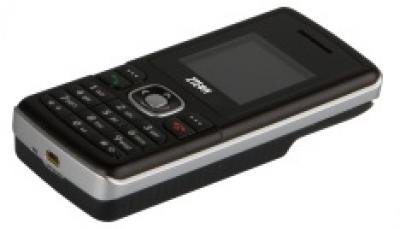All-Solar Phone Connects The Off-Grid World

At last, the solar powered phone is here – but it’s not a green thing, it’s a basic social necessity, say the developers

ZTE reckons that one hour in the sunshine – for instance on the dashboard of a car – will give the Coral 200 enough charge for fifteen minutes of talk time, thanks to new solar cell technology from Dutch company Intivation, that makes better use of the power in the sun’s rays.
Beating the voltage limits
A single solar cell, no matter how large, will produce a voltage of 0.5V so cells are normally connected in arrays, or panels, to provide power – so it takes eight small cells in series to raise the 3.7V needed to charge a phone battery. That arrangement that wastes space, according to Paul Naastepad, chief executive of Intivation, the company providing solar technology in the ZTE phone.
“We have a 20 percent improvement just from covering the area better,” he said. Intivation has a single-chip solution to step the voltage up from 0.5V to 3.7, so the phone only needs one solar cell, and less space is wasted. It’s also less sensitive to shifts in light strength, and gives better power than competing panels when the sun is at slanting angles, he said: “Overall, we can charge two and half times faster than traditional technology.”
Digicel set up the partnership, finding Intivation, and introduced its technology to ZTE, in May 2008. Since then, ZTE has verified it, and built the modified Coral phone. The solar cell and voltage stepping technology are entirely contained in the back panel, although the rest of the phone has minor modifications including a more robust battery – designed to survive 65C temperature – that can handle extended periods in strong sunshine.
Overall, the phone has a $40 manufacturing cost, which Bryant says is around 30 percent more than a similar phone Digicel used previously. None of that increase will be passed on to consumers – not, out of generosity, but for good business reasons, said Bryant: “More people can use the phone – and they’ll make more calls because they will have power.”
The phones will be shipped with a charger – although many users will never plug it in, said Bryant. Digicel is expecting to sell around 360,000 in the next eighteen months. Digicel also provides solar chargers – but integrating the two in one device prevents the charger from getting lost or otherwise separated from the phone, said Bryant.
Other devices coming
Intivation could make solar backs or sleeves for other devices, although on more power-hungry machines, solar would not replace mains charging, but would simply extend the working battery life, said Naastepad.